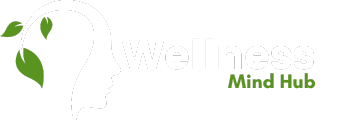Table of Contents
Starting a fitness journey can feel like a big task, but it’s all about taking small, manageable steps. This article will walk you through my personal my fitness plan experience of creating a fitness plan that works. From understanding where I started to setting goals and staying motivated, I’ll share what I’ve learned along the way. Let’s dive in and take the first step towards a healthier life together.
Key Takeaways
Understanding My Starting Point
Assessing My Current Fitness Level
Before diving into a new fitness plan, it’s crucial to know where you stand. Measuring your current fitness helps you set realistic goals and track your progress. Start by checking your cardio, strength, and flexibility. This will give you a clear picture of your starting point.
Conducting Self-Evaluation Tests
To get a better understanding of your fitness level, try some self-evaluation tests. Simple exercises like sit-and-reach, push-ups, and a mile run can show you where you excel and where you need improvement. These tests are easy to do and provide valuable insights.
Embracing My Baseline Without Comparison
Your fitness journey is unique to you. It’s important to embrace your baseline and not compare yourself to others. Focus on your progress and be proud of every step forward. Remember, fitness should fit into your life, not the other way around.
Setting Achievable Fitness Goals
The Importance of SMART Goals
Setting fitness goals gives you direction and motivation. Use the SMART method—Specific, Measurable, Achievable, Relevant, and Time-bound. SMART goals help you make realistic plans. Break big dreams into smaller steps, making progress clear and changes easy.
Examples of Realistic Goals for Beginners
Tracking Progress and Adjusting Goals
Tracking your progress is key to staying motivated. Use a journal or an app to record your workouts and achievements. If you find a goal too easy or too hard, don’t be afraid to adjust it. Your guide to creating fitness goals should be flexible to fit your needs and abilities.
Creating a Balanced Fitness Plan


A balanced fitness plan is essential for overall health and well-being. It ensures that all aspects of fitness are covered, from strength to flexibility. Here’s how to create one that works for you.
Developing a Personalized Workout Routine
Start by establishing a frequency that feels manageable. Instead of jumping into a rigorous five-day-a-week schedule, go with every other day and start with three days a week. This will allow your body to adapt and recover, reducing the risk of injuries. You will also slowly start to gain confidence and strength. Consider mixing in different forms of exercise. Gradually incorporate lightweight training, advanced stretching techniques, and low-impact cardio. This approach will enhance your overall fitness without placing too much stress on any one part of your body. You can use each as a section of the workout to create a complete program: warm up, work out, cool down.
Incorporating Cardio, Strength, and Flexibility
A well-rounded fitness plan includes cardio, strength training, and flexibility exercises. Cardio exercises like running or cycling improve heart health and endurance. Strength training, such as weightlifting, builds muscle and boosts metabolism. Flexibility exercises, like yoga or stretching, enhance mobility and reduce the risk of injury. Aim to balance these elements throughout your week to ensure comprehensive fitness.
Staying Flexible and Adaptable
Consistency is more important than performance and intensity. When you are starting your fitness journey, consistency is more important than how well you do. Schedule a daily appointment with yourself when you have no conflicts with your calendar. Many choose to make this appointment first thing in the morning before the day starts, when the only competition is 30 minutes of extra sleep. This is the most important piece of training: if it is not in the schedule, it does not exist.
Remember, developing a fitness plan is a highly individual journey. What works for your neighbor may not be the best for you. Begin with a solid self-assessment, embark on easy movements, and gradually expand your routine. This approach will make fitness more of a daily journey than a destination, opening your future to options you would not have dreamed of after a year of starting down this path.
Instead of telling yourself, “One day…” let today be your “Day One.” The journey doesn’t have to be overwhelming. It just needs to begin. Take that first step, and the path will become clearer with each movement forward.
Fueling My Fitness Journey with Nutrition
Understanding Nutritional Needs
To get the most out of my workouts, I need to understand my body’s nutritional needs. Staying hydrated is crucial for good health and effective workouts. Drinking enough water helps my muscles work properly and keeps me energized. Electrolytes like sodium and potassium are also important for muscle function.
Planning Balanced Meals
Planning balanced meals is key to fueling my fitness journey. I focus on incorporating a mix of proteins, healthy carbohydrates, and fats. Here are some tips:
Hydration and Its Importance
Hydration is essential for both performance and recovery. Drinking water before, during, and after workouts helps reduce the risk of injury and speeds up recovery. I aim to drink at least eight 8-ounce glasses of water daily, and more when I exercise.
Staying hydrated is like giving your body the fuel it needs to perform at its best.
By understanding my nutritional needs, planning balanced meals, and staying hydrated, I can maximize my workouts and stay on track with my fitness goals. For more tips, I often check out resources from a wellness store or take nutritionist online courses to stay informed.
Staying Motivated and Overcoming Challenges


Strategies to Stay Motivated
Staying motivated can be tough, but there are ways to keep going. Change it up if you feel stuck. Try new activities to keep things fun and interesting. Find a virtual exercise buddy to help keep you going. Having someone to share your journey with can make a big difference.
Dealing with Setbacks
Setbacks are normal. When they happen, don’t get discouraged. Learn from them and adjust your plan. Remember, progress may be slow, but it’s still progress. Keep your eye on the prize and remind yourself of your ultimate goals.
Celebrating Small Wins
Celebrate your small wins. Every step forward is a victory. Whether it’s completing a workout or reaching a new milestone, take time to acknowledge your achievements. This will help you stay motivated and keep pushing forward.
Using Technology to Enhance My Fitness Plan
Fitness Apps and Trackers
In today’s digital age, technology can play a big role in managing your fitness. Whether you choose wearable fitness trackers, fitness apps, online workout platforms, or smart home gym equipment, these tools can enhance your motivation and help you stay on track. Fitness apps and trackers can monitor your steps, heart rate, and even your sleep patterns. They provide simple app reviews and recommendations to help you choose the best one for your needs.
Online Workouts and Virtual Trainers
Online workouts and virtual trainers offer flexibility and convenience. You can find a variety of workout videos and live sessions that fit your schedule. Many health and wellness companies provide online platforms where you can join classes or get personalized training. This makes it easier to stick to my fitness plan, even on busy days.
Monitoring Progress with Technology
Using technology to track your progress can be very motivating. Apps and devices can log your workouts, track your progress, and even set reminders for your next session. This helps you see how far you’ve come and what you need to work on next. By keeping digital records, you can easily share your progress with a trainer or a health and wellness company for more personalized advice.
Embracing technology in your fitness journey can make a big difference. It helps you stay organized, motivated, and on track to reach your goals.
Reflecting on My Personal Fitness Journey


My Fitness Journey So Far
Taking a moment to reflect on your fitness journey is essential. It’s not just about the destination, but understanding where you started, acknowledging where you are now, and planning where you want to go. My fitness journey began with small steps and has grown into a significant part of my life. I remember the early days when even a short jog felt like a marathon. Now, I can confidently say that my stamina and strength have improved tremendously.
Lessons Learned Along the Way
Throughout this journey, I’ve learned several important lessons:
- 1. Consistency is key: Regular workouts, even if they are short, make a big difference over time.
- 2. Listen to your body: It’s crucial to pay attention to how your body feels and adjust your workouts accordingly.
- 3. Celebrate small wins: Every achievement, no matter how small, is a step forward.
- 4. Stay flexible: Be open to changing your routine to keep things interesting and avoid plateaus.
Embracing my baseline without comparison has been incredibly freeing. It no longer mattered that others were lifting heavier or running faster. What mattered was my personal progress and how I felt.
Future Fitness Goals and Plans
Looking ahead, I have set new goals to keep myself motivated and continue improving. Some of these goals include:
Reflecting on my journey so far, I am proud of the progress I’ve made and excited for the future. My fitness journey is ongoing, and I look forward to achieving new milestones and learning even more along the way.
Conclusion
Creating a fitness plan has been a journey of self-discovery and growth. It’s not just about lifting weights or running miles; it’s about finding what works for me and sticking to it. I’ve learned that setting small, achievable goals and celebrating each milestone keeps me motivated. Staying consistent, even when it’s tough, has made all the difference. This journey is ongoing, and I’m excited to see where it takes me. Remember, the most important step is the first one. So, lace up your shoes and start your own journey to a healthier, happier you.
Frequently Asked Questions
How do I start my fitness journey?
Begin by assessing your current fitness level. Set small, achievable goals and gradually increase your activity. Remember, consistency is key.
What are SMART goals in fitness?
SMART goals are Specific, Measurable, Achievable, Relevant, and Time-bound. They help you create clear and realistic fitness objectives.
How often should I work out as a beginner?
Start with three days a week and gradually increase as your fitness improves. It’s important to listen to your body and allow time for recovery.
What types of exercises should I include in my fitness plan?
A balanced fitness plan should include cardio, strength training, and flexibility exercises. This helps improve overall fitness and prevents boredom.
How important is nutrition in a fitness plan?
Nutrition is crucial. Eating balanced meals and staying hydrated supports your workouts and helps you reach your fitness goals.
How can I stay motivated on my fitness journey?
Set realistic goals, track your progress, and celebrate small wins. Mix up your routine to keep things interesting and don’t be too hard on yourself.














Leave a Review